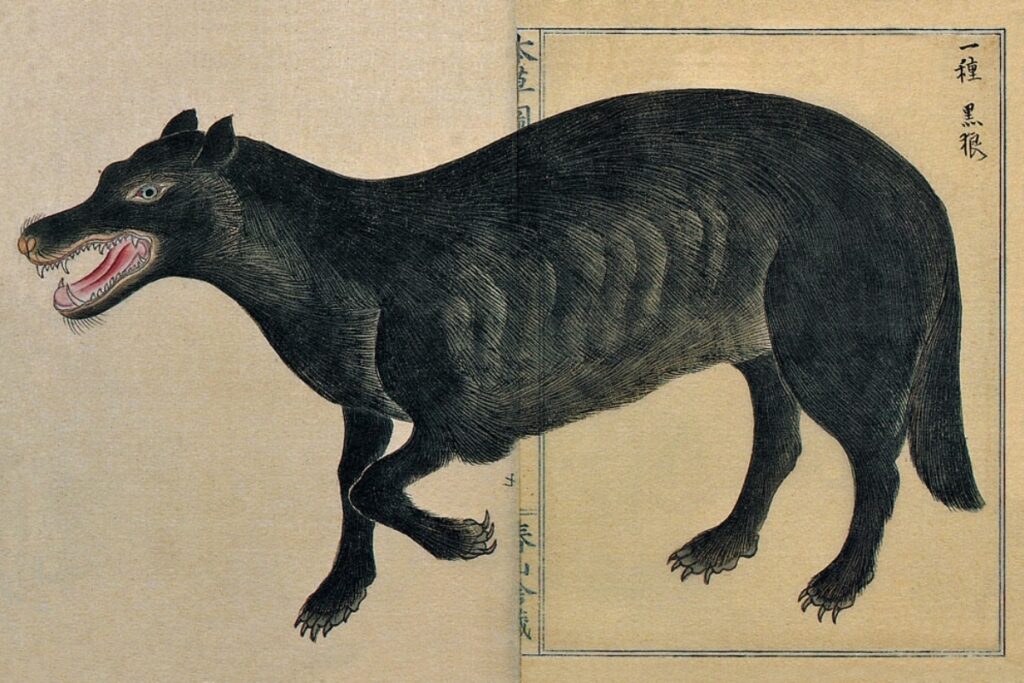
In a discovery that may reshape our understanding of Japan’s extinct wildlife, 13-year-old Hinako Komori has brought a long-forgotten Japanese wolf specimen back into the spotlight. While touring Japan’s National Museum of Nature and Science in Tsukuba, Hinako’s deep knowledge of wolves led her to spot an unusual taxidermy specimen. Her sharp eye ignited a groundbreaking investigation that has since captivated researchers and sparked fresh interest in the once-extinct Japanese wolf.
A Chance Encounter
The story began three years ago, when Hinako, then 10, joined a museum tour with her father. Already a dedicated student of Japanese wolves, she had spent years reading about the species and studying rare photos of taxidermy specimens. During the tour, she noticed a small creature, about the size of a fox, half-hidden on a lower shelf. It bore characteristics of a Japanese wolf—a bushy tail, short neck, and distinctive muzzle shape. To Hinako, it was unmistakable.

When she inquired about the specimen with the tour guide, she received only a vague response, but the encounter planted a seed. Once home, she sent a letter back to the museum, determined to learn more. That message, as it turned out, would launch an investigation into the origins of specimen “M831,” a potential link to a species thought lost for over a century.
The Japanese Wolf
Canis lupus hodophilax, the Japanese wolf, was once widespread across the islands of Honshu, Shikoku, and Kyushu. Revered in Japanese folklore as a guardian of the mountains and fields, the animal was valued for keeping down populations of crop-damaging boars and deer. But with increased interaction with people and the growing pressures of modernization, the wolf soon fell prey to diseases introduced by human interaction. The last verified Japanese wolf was killed in 1905 in Nara Prefecture, and since then, the animal has lived on only through a handful of preserved specimens, drawings, and ancient folklore.

For decades, scientists have been puzzled by the Japanese wolf’s distinctive features. Smaller than its continental counterparts, the Japanese wolf is thought to have adapted to its environment through “island dwarfism”—a phenomenon where species isolated on islands evolve to become smaller, often due to limited resources and lack of predators. However, recent DNA analyses reveal even more complexities—suggesting that Japanese wolves were possibly one of the closest relatives of modern domestic dogs.
The Mystery of M831
Curious about Hinako’s discovery, Sayaka Kobayashi, a researcher at the Yamashina Institute for Ornithology, and Shin-ichiro Kawada, a zoologist at the National Museum of Nature and Science, joined the teenager in exploring the origins of M831. This collaboration led to findings that the specimen was likely one of two Japanese wolves brought to Ueno Zoo in Tokyo in the late 19th century. Old records indicated these wolves were held at the zoo before eventually being preserved as taxidermy specimens.

More intriguingly, DNA tests on M831 pointed to inconsistencies in the skull and other skeletal features compared to known Japanese wolves. Researchers now believe that M831 could represent a wolf-dog hybrid, possibly born of a wolf mother and a domestic dog father. The specimen’s hybrid status might explain its odd features and could provide insight into how Japanese wolves interacted with dogs—blurring the line between wild and domesticated animals in 19th-century Japan.
A Persistent Young Researcher
Hinako’s dedication to uncovering the story of M831 earned her accolades, including an education ministry award. But beyond recognition, her work exemplifies the way in which a fresh perspective can uncover new paths in scientific inquiry. Kobayashi, who worked closely with her on the project, noted Hinako’s “great talent for noticing things,” highlighting how the young researcher’s persistence and curiosity fueled discoveries beyond anyone’s expectations.
The impact of her find reaches beyond museums and science journals—it’s inspiring new interest in Japanese wolves and their place in Japanese history. Hinako herself says the Japanese wolf represents both “mystery and imagination,” which continue to propel her pursuit of knowledge.
Future of the Forgotten Wolf
For now, further genetic testing on M831 isn’t planned, as current techniques could damage the rare specimen. But as Kawada notes, “technology is advancing rapidly,” and by the time Hinako reaches college or graduate school, there may be gentler methods to analyze DNA and unlock the final secrets of M831. Until then, researchers will preserve this specimen carefully, holding out hope that future insights will continue to unfold.

In an era when younger generations are often accused of being disconnected from nature, this young student has brought an ancient creature back to life in the minds of scientists and nature enthusiasts alike. Her rediscovery of the Japanese wolf—or at least one of its hybrids—may be a stepping stone to new revelations about how wolves, and possibly even dogs, evolved and adapted in Japan’s unique landscape.
Sources:







